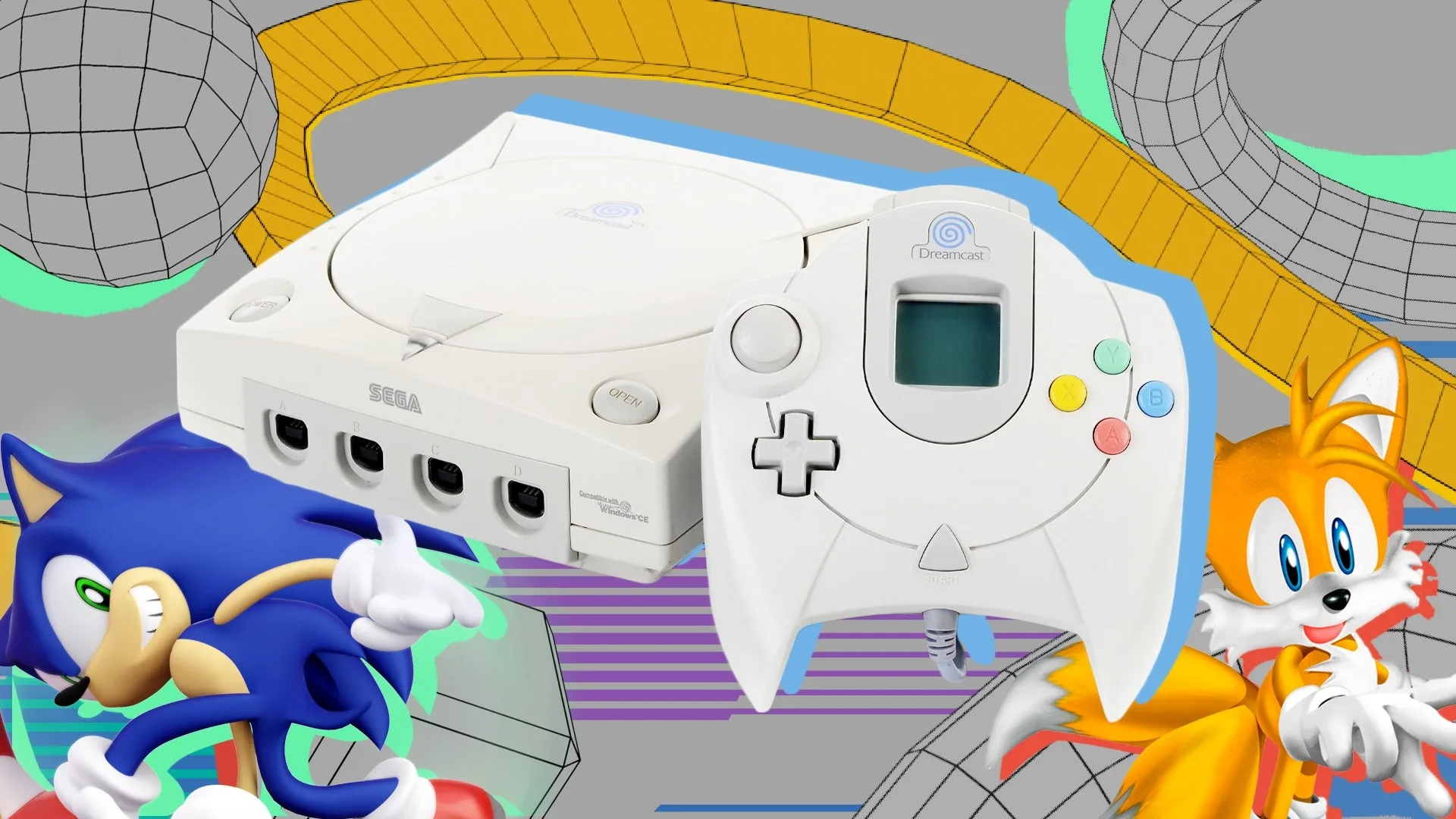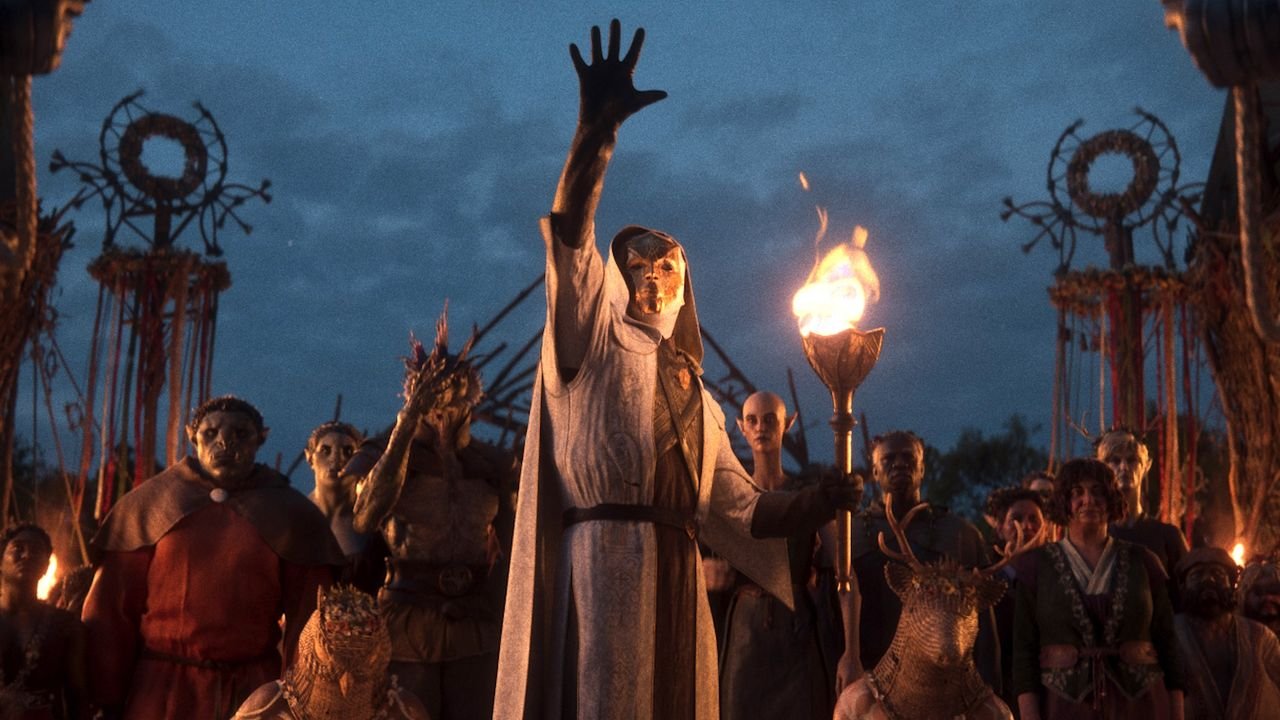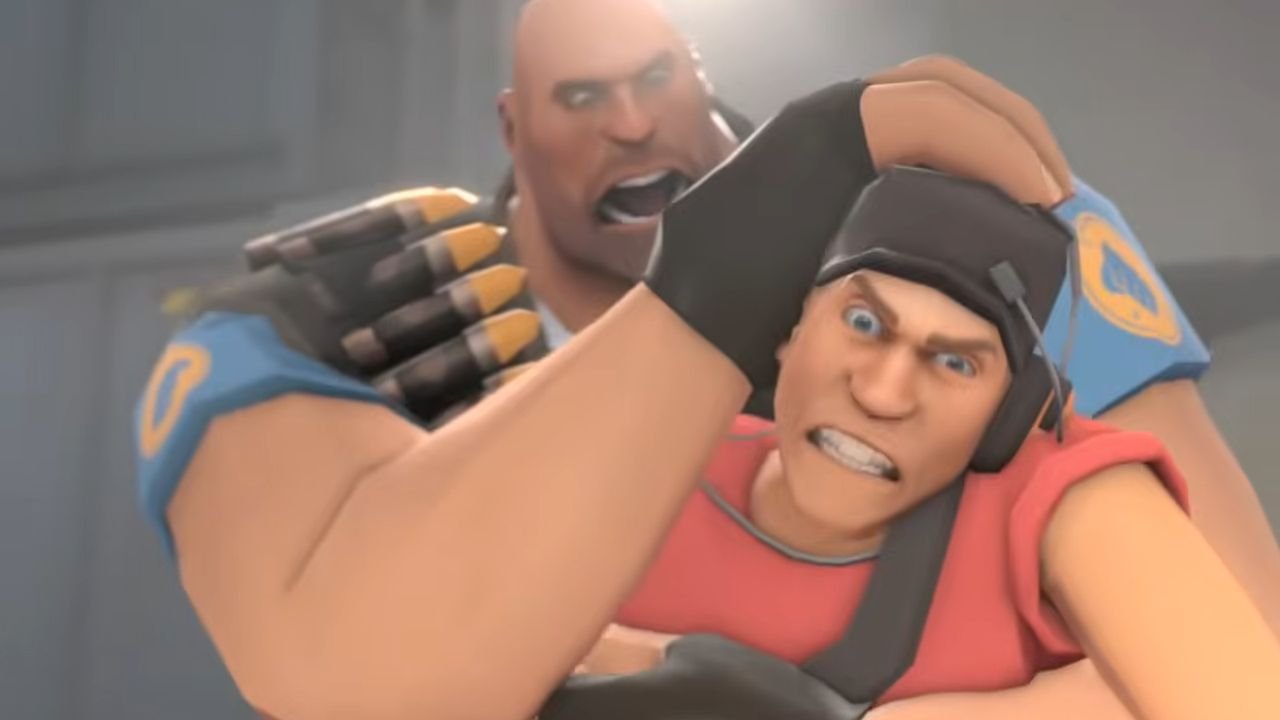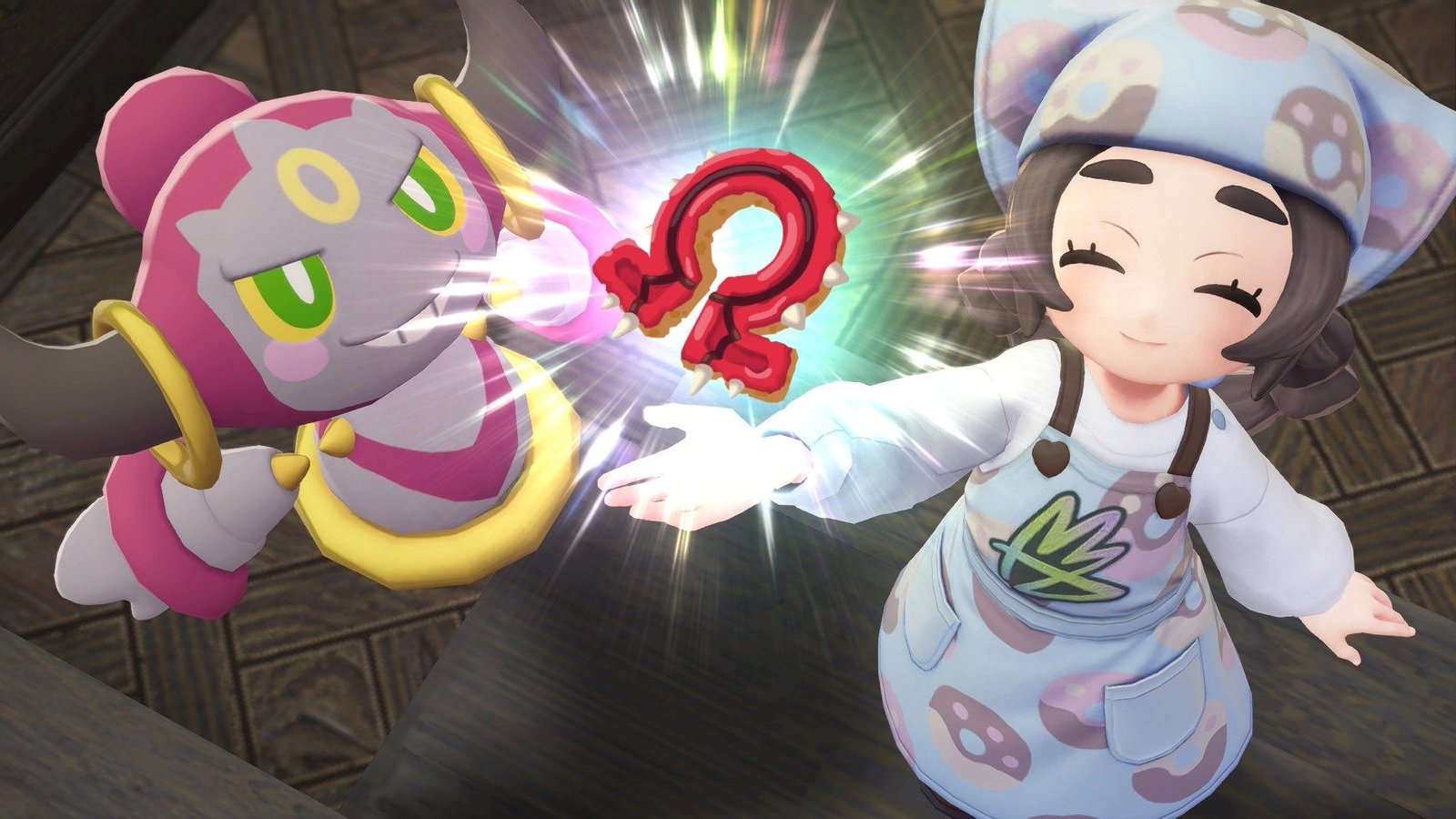How Dreamcast Killed Sega’s Hardware Reign
It was September 10, 1999 – the day after the Sega Dreamcast’s US launch.
West Coast rapper Del the Funky Homosapien had just finished a gaming-tinged set at a San Francisco club (“Marvel Vs Capcom, beyond fathom // Tell the truth, Playstation ain’t ready to have ‘em”) and now Peter Moore, Sega of America’s senior vice president of marketing, stood on stage, ready to reveal the console’s day-one sales figures to the world.
He lifted paper flaps covering each digit, one by one. The crowd got louder as the millions stacked up. It roared as he flicked the last flap aside to show a total of nearly $98 million in sales. He declared it the “biggest launch in entertainment history” – and, crucially, bigger than the US launches of the PlayStation and the Nintendo 64.
It was, he tells IGN, a moment of “euphoria”.
Less than 18 months later, Moore, by that point Sega of America’s president, told an industry conference call that Sega was leaving the console business altogether. “It was tragic,” he says.
An 18-year era of Sega hardware, which included four of the best gaming consoles of all time, was over.
It’s tempting to blame the swift demise of the much-loved Dreamcast on something easy and obvious, perhaps that EA refused to put its games on the console, or that the impending PlayStation 2 spooked prospective buyers. But from speaking to Moore and Simon Cox, the former editor-in-chief of Official Dreamcast Magazine, it’s clear the Dreamcast’s death was complicated, messy, and – arguably – inevitable, even as Moore stepped onto that San Francisco stage.
Moore joined Sega from Reebok, having never worked in games. His prevailing attitude to the industry was, he says, “slightly pissed off”, because he’d bought his son a Sega Saturn only for the console to be effectively abandoned by the company (he was one of many feeling burned).
But when he heard the Dreamcast’s promise of online gaming – it was the first console with a built-in modem – he was sold. Connecting people around the world to compete or collaborate in shooters, RPGs, sports games and brawlers would be a “rocket boost” for console gaming, he thought, and Sega had the chance to get there first.
It led Moore to coin the phrase: “We’re taking gamers where gaming is going.”
The console had stalled in Japan since its 1998 launch, but Moore and others generated excitement for the Dreamcast in the massive US market with flashy ads, celeb appearances and, more fundamentally, a rock-solid launch lineup that included Soulcalibur, the first 3D Sonic, and NFL 2K (Sega launched the 2K games after EA’s snub).
Within two weeks of launch Sega had sold 500,000 machines in the US – that’s the same number Sony would make available for the PS2’s monumental US release a year later.
Moore’s esoteric TV marketing – including the AI-themed “It’s thinking” slogan – had piqued the public’s curiosity, and retailers were willing to stock their shelves with Sega’s powerful, stylish machine, apparently forgiving the failure of the Saturn after many conversations with Moore and other execs.
Cox, who launched Official Dreamcast Magazine in the summer of 1999, recalls the feeling of the moment. “After the complete lack of energy with the failure of the Saturn – which died a slow, horrible, fairly boring death a year or two before – the ambition was there for the Dreamcast. We had this magazine coming out and they seemed to put a lot behind that… I think they did a good job generating some extra excitement,” he says.
The enthusiasm was reflected in magazine sales: Before long, Official Dreamcast Magazine had a circulation of more than 250,000, which put it not far below the widely read Electronic Gaming Monthly.
But even then, during what might be considered Dreamcast’s best days, seeds of doubt were sprouting, poking up through the roses.
Moore “wasn’t fooled” by the joy of launch day. “It was very clear to me this was just a somewhat of a euphoric moment in time for us, but I knew that the real litmus test was going to be the following Christmas holidays [2000],” he says.
His biggest concern was bolstering a strong set of first-party games, developed by a group of talented in-house studios, with third-party titles.
Shenmue and Phantasy Star Online, the first proper console MMO, were coming soon – but Moore knew that wasn’t enough. Anyone considering buying a Dreamcast needed to know big publishers were on board, ready to pump games into the console for many years to come.
The PS2 loomed over Moore’s conversations, creating fear, uncertainty and doubt in everyone’s minds.
As Moore flew around meeting the biggest publishers of the time – Activision, Acclaim Entertainment, Codemasters – he spoke to execs who were hesitant. “They were kind of sitting on their hands as regards to, ‘When are you going to commit for your next game? What does the pipeline of Dreamcast games look like for the next three years?’ And there wasn’t one.”
Sony had announced the PS2 at the Tokyo Games Show earlier in 1999, to be released the following year. After the success of the PlayStation, a successor loomed over Moore’s conversations, creating fear, uncertainty and doubt (which Moore shortens to FUD) in everyone’s minds.
Sony’s marketers did everything they could to “FUD” the Dreamcast, Moore says, painting it as a “transitional platform”. Gamers and retailers were left in no doubt that while the Dreamcast was a good console, “the behemoth is coming – and that’s where you’re all going to flock to”.
He suspects Sony could also afford to pay developers to make their best games for PS2 but not for Dreamcast, he says.
And Microsoft were, by this point, already having conversations about long-term deals ahead of the launch of the original Xbox, which would arrive in 2001.
Moore was therefore stuck between the track record of Sony and the American juggernaut Microsoft, “with a chequebook that you can’t even lift off the ground”.
“Where does that leave Sega?” he asked himself.
Cox says that if Sony could turn gamers’ heads towards the upcoming PS2, then Sega had itself to blame, at least in part.
People felt betrayed by the Saturn, an expensive console that – as Moore found out with his son – did not get proper long term support (this was in contrast to the earlier Sega Genesis, known as the Mega Drive outside the US, which had a long, generous tail).
“People had spent a lot of money to buy a Saturn, and then the games either weren’t great or there weren’t enough of them,” Cox says.
The Saturn competed with the original PlayStation and many who felt spurned bought Sony’s console. It was a lost generation, and as soon as those people knew a PS2 was coming – complete with a DVD player, which at the time was a sought-after $300 gadget – they weren’t going to come back to Sega, Cox says.
Sega was therefore building the Dreamcast on unstable ground. It was trying to repair its reputation with retailers and gamers while also launching the type of console players hadn’t seen before, and perhaps couldn’t grasp the importance of.
In other words, Moore and colleagues “had to bail out at the same time as moving this ship forward”, Cox says.
Sega successfully patched relations with retailers and generated excitement from the launch, but people who were reluctant to buy early began to ask: “What next?” And Cox himself believes Dreamcast’s “It’s thinking” slogan didn’t help. It created curiosity, yes – but it wasn’t a concrete message, and wasn’t enough to convince people who remembered the Saturn, he says.
Into that void of doubt rushed Sony, perennial entertainment winners, promising an “emotion engine” processor that would properly move you.
“They were the big guys, they had the money, they had the clout, they had the advertising agencies, they had the emotion engine… they were constantly getting out there, and gamers were getting super excited. I think that’s probably what cost Sega,” Cox says.
In many ways, the sales of Cox’s magazine mirrored that of the console – it flew at the start, then stabilized. “It found its natural limit.”
The lack of long-term third-party support, which Moore was working so hard to secure, showed in the magazine – Cox didn’t have to worry about juggling dozens of games.
“It wasn’t a hard thing to stay on top of,” he says. “We weren’t scrambling around… it was much more, ‘Oh, are these games left?’ Let’s cover those.”
Sega’s studio heads were, Moore says, “close-minded, closeted, demigods”.
Perhaps one of the reasons Moore was so keen to secure third-party games was his concern that first-party Sega studios were slow to respond to broader industry changes.
He sensed a shift towards “Western-style games” – this was a year before Grand Theft Auto 3 would become the best-selling game of 2001. Cox says he felt it too.
“Something was changing… the center of gravity is moving towards the West from Japan,” Cox says. “I don’t believe Japan suddenly ceased to exist and then it was all Doom and Tomb Raider and Grand Theft Auto – but certainly, that center of gravity had moved between the two a bit more evenly. And I think Sega were caught in that.“
Moore began sounding “alarm bells”. On trips to Sega’s Japanese HQ he’d fight – metaphorically – with developers about the future of the marketplace. But the studio heads were, Moore says, “close-minded, closeted, demigods”. Undoubtedly brilliant, but also unwilling to conduct the kind of market research that would soon become second-nature in the industry; unwilling to adapt to a globalizing audience.
“They would never fly to the US to… listen to gamers,” he says. “There was a pretentiousness there because these guys were freaking rock stars in Tokyo. Everything they had previously touched, for the most part, had turned to gold.”
Moore told (Sonic creator Yuji) Naka to “f**k off”, a sentiment a horrified Japanese translator refused to convey. “But I also knew Naka had spent a lot of time in America. He knew exactly what I was talking about.”
Moore says in an ideal world, Sega would’ve instructed its creative directors, and heads of studios, to do three months of market research, of listening to gamers around the world, before they even pitched a project. Moore hoped the likes of Toshihiro Nagoshi, Yuji Naka and Yu Suzuki would’ve embraced the idea – but it never materialized.
“There was, I don’t want to call it arrogance, but there was the belief that they knew what was going to be a good game, gamers didn’t know,” he says. “These were brilliant developers, really brilliant developers, but the close-minded view was our downfall in the end.”
(As an aside, these frustrations would later lead to a famous conversation that convinced Moore to leave Sega in which he was accused by Sonic co-creator Naka of doctoring market-research footage. Moore told Naka to “f–ck off”, a sentiment that a horrified Japanese translator refused to convey. “But I also knew that Naka had spent a lot of time in America,” Moore says – “he knew exactly what I was talking about.” Read more here.)
Whether a shift in Sega’s development attitudes could’ve saved the Dreamcast, we’ll never know.
Perhaps it wouldn’t have mattered. You get the sense from speaking to both Moore and Cox that there was an inevitability about the Dreamcast’s impending doom: Bad timing combined with irresistible competition from companies with far more money.
The bet on online gaming was admirable, and showed foresight. But Phantasy Star Online, the Dreamcast’s big MMO, was four full years before World of Warcraft would explode the genre. As Cox recalls, people in his office were excited about it, “but it didn’t seem to quite reach that level of being the cultural phenomenon that you’d expect it to be. I think all that stuff was slightly ahead of its time.”
Dreamcast was also the first console to try DLC, which over the next few decades, to some controversy, would fuel many parts of the industry. Games like Shenmue, a semi-open world adventure, previewed popular genres before they got big, Cox says. The Dreamcast even had its own internet subscription service, Seganet, a short-lived which launched alongside NFL 2K1 for $21.95 a month.
In the context of Moore’s phrase – “Taking gamers where gaming is going” – it turned out Sega arrived before the gamers did.
“One of the problems being ahead of your time,” Cox says, “is you’re also ahead of your audience, ahead of your market, ahead of where your profits are going to come from.” He compares the Dreamcast to somebody arriving too early to a party – “and eventually when the party got going, Sony showed up like Tony Stark, with fireworks”.
Moore says he can’t think of anything that he personally could’ve done differently to save the Dreamcast, or produce a better outcome for Sega. And if it had arrived later, it would’ve already been in the jaws of the PS2, he says.
It was felled by the “double edged sword of the growth of the industry”, he says. In the online gaming boom, somebody was going to miss out, and inevitably that was going to be the smaller player, not Sony or Microsoft.
“If the industry is going to grow to the level that it is now, that takes mega corporations to be able to fund that,” he says.
“I believed in online, I believed it was the future. We were taking gamers where gaming was going, we had amazing content, both first party and third party at launch. We had an unbelievably powerful and robust piece of hardware.
“But with the PS2 launch and then Microsoft coming into the market with billions upon billions of dollars ready to spend… It just wasn’t going to work out.”
It’s a shame that the Dreamcast, with all its enigmatic ambition, had to end with Excel spreadsheets and conference calls.
It wasn’t until Christmas 2000, more than a year after Moore climbed onto stage at that San Francisco club, that the console’s fate was officially sealed.
Up to then, Sega of America was hitting its targets and retailers still believed in the Dreamcast. Moore awaited the “hockey stick”-style leap in the sales graph, which dutifully arrived, but the numbers didn’t jump high enough.
“In those days, retailers would report via telephone to you what their sell-through numbers are, and then you would build an Excel spreadsheet,” he explains. When Sega punched in the Boxing Day numbers, “the writing was on the wall”.
Sega was already making a loss on each console, relying on game sales to pick up the slack. By mid-2000, years of declining profits had turned red, and it was losing roughly $400 million a year.
“I can go and beg all I like in Tokyo but I know ultimately they’re going to pull the plug,” Moore says. “They cannot afford to keep haemorrhaging cash. They cannot afford to keep making these things at a loss – and they’re not even selling.”
In the new year he flew to Tokyo for a postmortem, and was told Sega was getting out of the hardware business. “And oh, by the way, on January 31, you need to chair a telephone conference call and you need to tell the world.”
He says it was “more than deflating, it was tragic”, not least because of the mass layoffs that would inevitably follow.
Cox also uses the word “tragic” – because of “all the effort that went into the Dreamcast, and the beauty of the thing and the design and the games and what it meant to those who it meant something to”
It’s a shame that the Dreamcast, with all its enigmatic ambition, had to end with Excel spreadsheets and conference calls. This wasn’t just the death of a console – it was the end of an era. The world of gaming was losing SEGA’s unique hardware sensibilities.
“I do believe Sega had an aesthetic and a way of looking at things that was, I think, quite innovative and a little bit different,” says Cox. “There was something a little bit off-the-beaten-path about Sega. They had the ability to surprise… they were a bit strange and idiosyncratic.
“They had a sensibility that came from their arcades which was, ‘Let’s try this, this could be cool. Oh, it needs two chips to work? Okay. Put another chip in.’ There was a slightly skunkworks vibe… they weren’t as slick, somehow. I do miss that.”
Moore agrees that “the world, at that moment, was a worse place with no Sega hardware”.
“You had a generation that had grown up with those platforms and they were Sega fans. They’re still around today.”
The Dreamcast will be remembered forever by those fans, and by developers who were around to glimpse the early potential of online console gaming, Cox says.
“We can do MMO on console… Sega did it, there it is. Maybe that’s the epitaph on the tombstone,” he says. “Dreamcast: it showed what was possible.”
In the years to follow, online gaming, which was already booming on PC, would explode on consoles, from strategy games to shooters. The Dreamcast sadly wasn’t around to see it.
“It takes somebody to stick their neck up over the parapet and go, ‘Online – that’s where it’s at,’” says Moore.
“Well, you know what happens? When you stick your head up, sometimes, it gets shot off.”
Samuel Horti is a journalist with bylines at the BBC, IGN, Insider Business, and Edge.











Post Comment